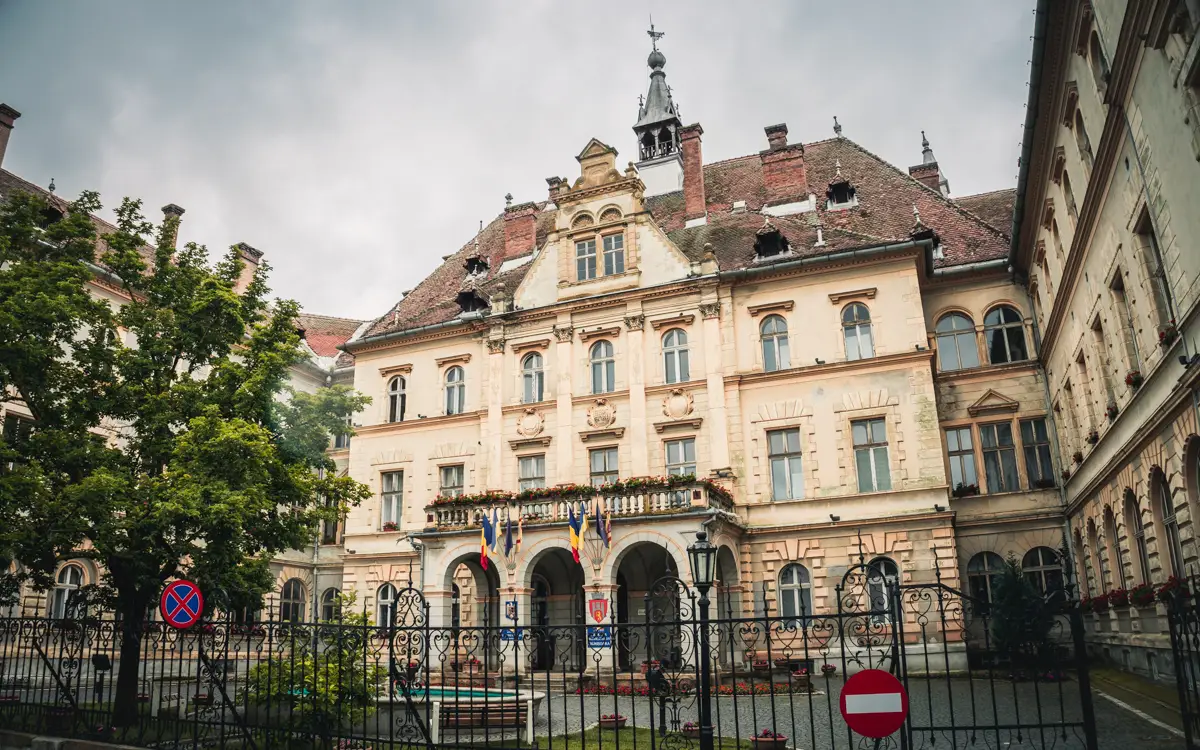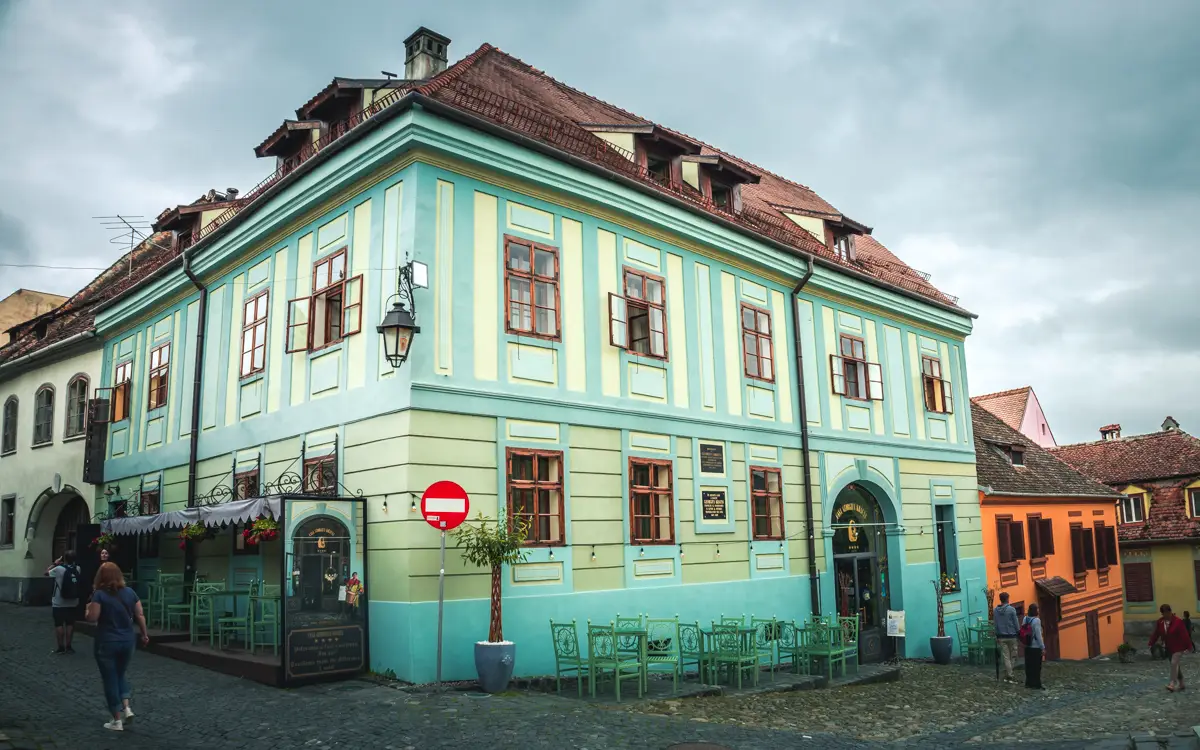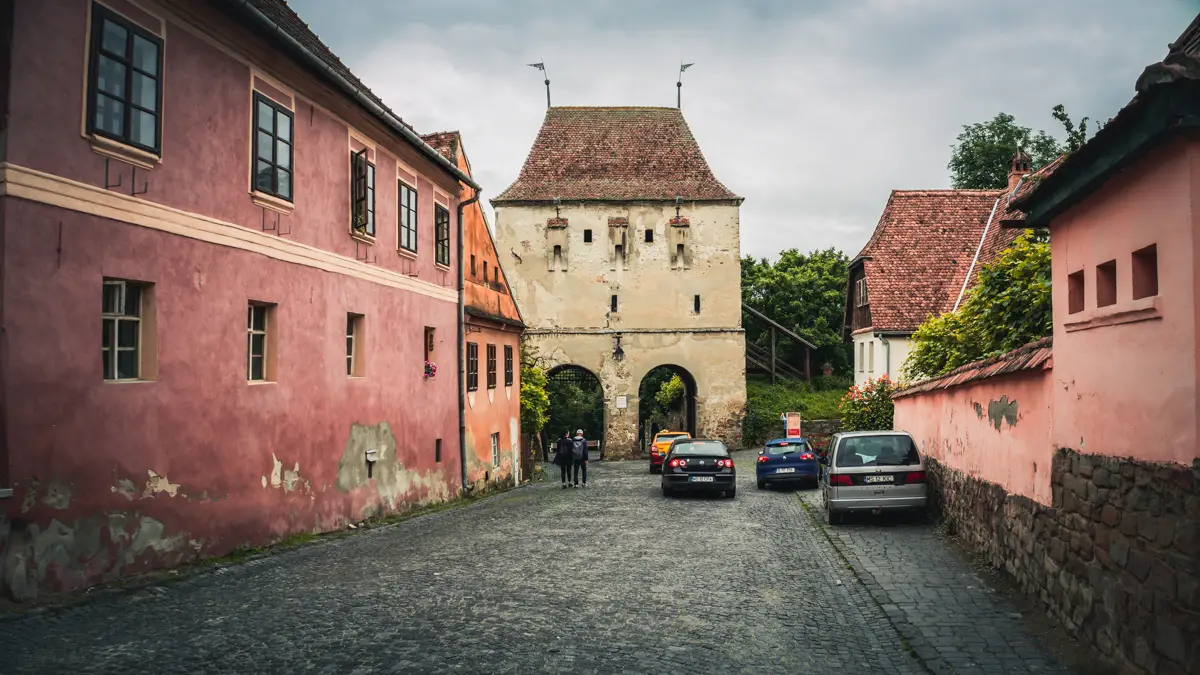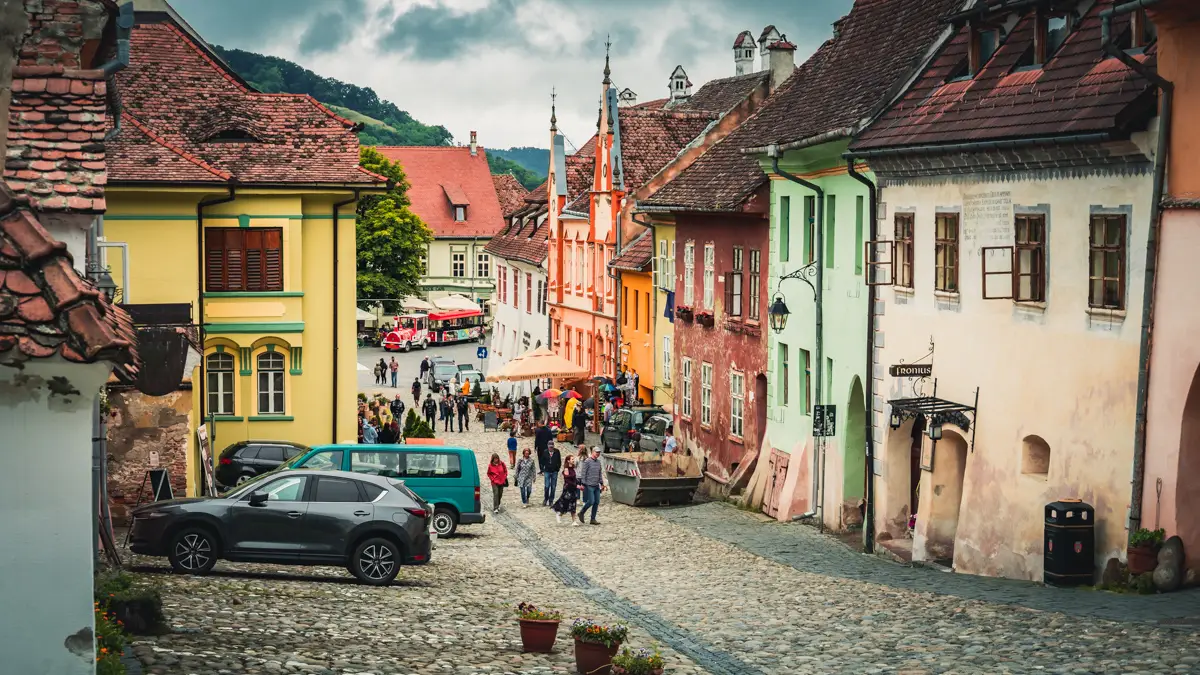Published on November 12, 2023 by Zoltan Nyaradi
The medieval citadel of Sighișoara is an inhabited citadel located in the historical region of Transylvania. To be more precise, it’s located almost in the center of Romania. Sighisoara is a must-visit destination for travelers seeking a unique and enchanting experience. This charming town offers a journey back in medieval times, where every corner is steeped in history and every building tells a story.
The inhabited medieval citadel is a popular tourist attraction in the region. Tourists from all over the world visit this place.
Sighisoara was founded in the 12th century when German settlers, known as Saxons, came to this region. The city was built on a hill and it was surrounded by a fortification wall with many towers to protect the inhabitants from various dangers.
Table on content:
- The Clock Tower (Turnul Cu Ceas)
- Vlad the Impaler’s birthplace (Casa Dracula)
- The Monastery’s Church (Biserica Manastirii)
- Sighisoara Town Hall
- St. Joseph’s Roman Catholic Church
- Georgius Krauss Guest House
- The Shoemaker’s Tower (Turnul Cizmarilor)
- Colorful houses in the medieval citadel
- Tailors’ Tower (Turnul Croitorilor)
- The Citadel Square (Piata Cetatii)
- Towards the upper part of the medieval citadel
- The Scholar Stairway
- Joseph Haltrich High School
- Church on the Hill (Biserica din Deal)
- The Ropemakers’ Tower (Turnul Franghierilor)
- The old Lutheran cemetery
- Umbrella Street in Sighisoara
The Clock Tower (Turnul Cu Ceas)
The Clock Tower is the landmark of the city. Inside you will find a museum where you can see many interesting items from the medieval era. Also, up in the tower, you can see the clock mechanism as well. On the top floor, you will find an open balcony from where you can admire the entire medieval citadel and the rest of the city of Sighisoara. Right under the Clock Tower, you will find the torture chamber.


Vlad the Impaler’s birthplace (Casa Dracula)
According to the legends, the building painted in yellow was the birthplace of Vlad the Impaler aka Dracula. Today inside this building you will find a nice restaurant.


The Monastery’s Church (Biserica Manastirii)
This large Gothic church in the past was part of an old monastery destroyed in the 19th century. If you would like to visit it, then you will find it very easily because it’s located to the right side of the Clock Tower.


Sighisoara Town Hall
If you are walking from the Clock Tower towards the Roman Catholic Church on Piata Muzeului street, then after the Monastery’s Church the next big building is the Town Hall.

St. Joseph’s Roman Catholic Church
The St. Joseph’s Roman Catholic Church can be found on the northeastern side of the medieval citadel, close to Shoemaker’s Tower. This church was built between 1894 and 1896 by the Hungarians.

Georgius Krauss Guest House
Next to the Roman Catholic Church there you will find the Georgius Krauss guest house. This beautiful house was built in the 16th century and there the notary Gregorius Krauss lived. If you looking for an accommodation in the inhabited medieval citadel than this could be one option.

The Shoemaker’s Tower (Turnul Cizmarilor)
The Shoemaker’s Tower is located very close to the Roman Catholic Church.

Colorful houses in the medieval citadel
The cheerful hues range from warm yellows and soft pinks to rich blues and greens, creating a visually stunning panorama against the backdrop of the medieval architecture. The vibrant atmosphere of Sighisoara’s colorful houses is further accentuated by the lively street markets, artisan shops, and cozy cafes that line the winding streets. It’s a place where the past seamlessly blends with the present, offering a unique and immersive experience for those who are fortunate enough to explore its enchanting streets.




Tailors’ Tower (Turnul Croitorilor)
The Tailor’s Tower is the second entrance into the medieval citadel. This is the only road on which the cars can enter or leave the citadel. Keep in mind that only the locals who are living in the citadel are allowed to drive up in the citadel. This tower is renowned for its imposing massiveness and elegant simplicity. If you are going under the tower then you will have the chance to see the ancient railings that slides vertically.

The Citadel Square (Piata Cetatii)
The square is an excellent place to savor local delicacies, shop for souvenirs, and soak in the lively atmosphere that characterizes this enchanting town. Surrounded by cobblestone streets and surrounded by well-preserved medieval architecture, the Citadel Square is a captivating blend of old-world charm and a lively present, making it a must-visit destination in Sighisoara.




Towards the upper part of the medieval citadel
If you would like to visit the upper part of the citadel, one option is the walk on School Street (Strada Scolii) to the Scholars’ Stairs which is a covered wooden stairway connecting the lower part of the citadel with the upper part. The second option to reach the upper part of the citadel is the continue to walk up on Stair Street (Strada Scarii). The street starts near the Scholars’ Stairs.


The upper part of the medieval citadel
After a not-very-long walk from Citadel Square, the remaining attractions will unfold before you.
The Scholar Stairway
Constructed in 1654 by the initiative of Mayor Johann Both, this staircase stands as both a testament to historical foresight and a practical solution for students traversing the challenging weather of heavy winters or rain to reach the school located near the Church on the Hill.
Originally comprised of 300 steps, the wooden stairway underwent a modification in 1849, reducing its count to 175 steps. The stairway, reminiscent of a tunnel, showcases a remarkable architectural marvel. As the sun’s rays delicately pierce through the wooden slats, it creates an enchanting play of light and shadow, guiding the way to the hill’s summit.

Joseph Haltrich High School
Established in 1522, this high school is among the oldest educational institutions in Transylvania. During the years, the high school underwent several renovations and extensions. The school is also know as the School on the Heal because it was built on a smaller hill.

Church on the Hill (Biserica din Deal)
The Church on the Hill in Sighisoara is a captivating testament to the town’s medieval legacy. Perched on a hill overlooking the historic center, this Lutheran church dates back to the 14th century. Ascending the stone steps to reach the church, visitors are rewarded with panoramic views of Sighisoara and its charming red-roofed houses. Today has several architectural styles, including Gothic, Renaissance and Baroque elements.
If you visit the interior of the church then you can see many valuable sculptures, wall paintings, and old frescoes.

The Ropemakers’ Tower (Turnul Franghierilor)
Currently, this tower was turned into a guard house for the old cemetery which is right behind the tower.

The old Lutheran cemetery
Next to the Church on the Hill and the Ropemakers’ Tower, you will find the old Lutheran cemetery.

Umbrella Street in Sighisoara
Perhaps after a long walk in the medieval citadel, you would like to hang out or perhaps you would like to eat or drink something. A pretty nice place is Octavian Goga Street which can be found on the foothill of the citadel.

Map with the attractions in the medieval citadel
What else you can visit near Sighisoara?
The historical region of Transylvania is renowned for the old Traditional Saxon villages, medieval fortresses, and citadels, let’s not forget about the fortified churches as well. Not very far from Sighișoara, you will find the following destinations to visit. You can reach them very easily by car.
- Viscri – this Romanian village was made very popular by His Royal Highness, the Prnice of Wales. In my opinion, this village is one of the best preserved traditional Transylvanian village. I highly encourage you to check out this place.
- Rupea fortress – This fortress is not very far from the village of Viscri. So if you are in the area you can visit this place as well.
- Saschiz – I would like to add Saschiz to the list as well, if you are driving from Sighișoara towards Brasov, then at some point, you will drive through Saschiz were you will find an interesting fortified church. The church tower is almost in the middle of the village, next to the main road.
- Biertan – Here you will find an old fortified church that is included in UNESCO World Heritage Sites. From Sighisoara by car, you will reach this commune in approximately 30 minutes.
- Sibiu – Another possibility is to explore the old historical center of Sibiu. The distance from Sighisoara to Sibiu is approximately 90 km.






Leave a Reply